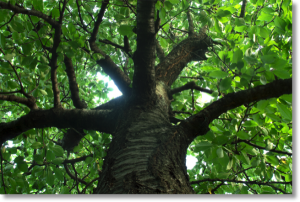Pruning Your Trees: Part Two
Thank you for continuing with our article on how to prune your tree. Here in the Tri-Cities, we have a lot of need for pruning trees and tree maintenance. Let’s continue:
There are three steps to pruning large branches.
- Make a small wedge shaped cut on the underside of the branch just on the branch side of the stem collar. This will break the bark at that point and prevent a tear from running along the bark and stem tissue.
- A little further along the branch, starting towards the top of the branch, cut all the way through the branch leaving a stub end.
- Lastly, make a third cut parallel to and just on the branch side of the of the stem collar to reduce the length of the stub as much as possible.
A procedure similar to this is used in pruning one of two branches (or one large branch and a stem) joined together in a ‘U’ or ‘V’ notch. Make the first notch cut on the underside of the branch you’re pruning well up from the crotch. For the next cut, cut completely through the branch from inside the notch up from the ridge of bark joining the two branches. Finally, in order to shorten the stub that is remaining, make the third cut just to one side of the branch bark ridge and roughly parallel to it.
The dormant season, late fall or winter, is the best time to prune although dead branches can and should be removed at any time. Pruning during the dormant period minimizes sap loss and subsequent stress to the tree. It also minimizes the risk of fungus infection or insect infestation as both fungi and insects are likely to be in dormancy at the same time as the tree. Finally, in the case of deciduous trees, pruning when the leaves are off will give you a better idea of how your pruning will affect the shape of the tree.
In the next section, we will discuss the steps necessary in pruning your trees
Continue to Part 3 of Why To Prune Your Tree Here
Pruning Your Trees: Part Two Read More »
